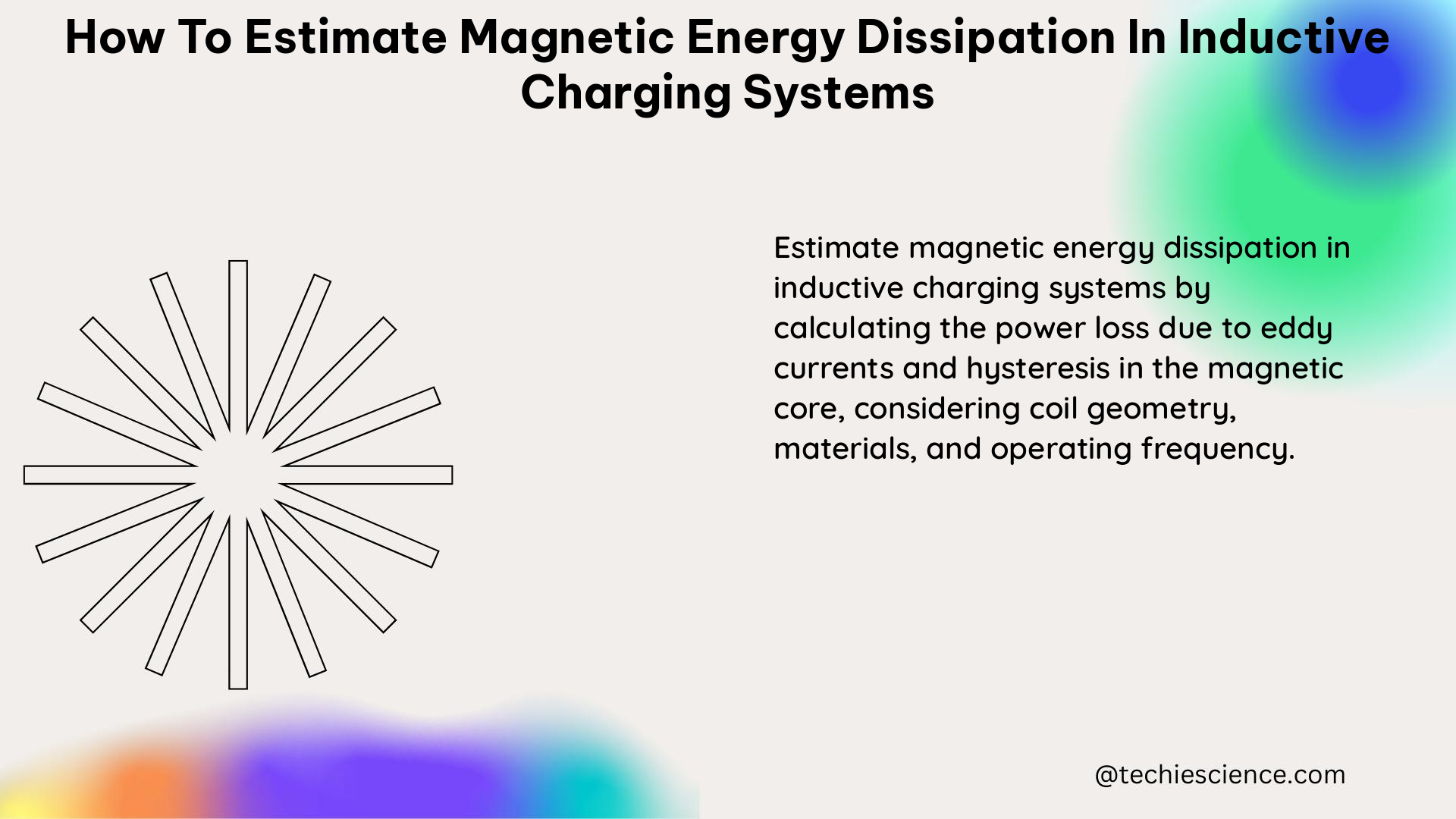Estimating magnetic energy dissipation in inductive charging systems is a crucial step in designing efficient and safe wireless power transfer (WPT) solutions. This comprehensive guide will delve into the theoretical principles, practical considerations, and simulation tools that can help you accurately estimate and manage the magnetic energy dissipation in your inductive charging system.
Understanding the Theoretical Foundations
Power Dissipation Density (Pd)
The power dissipation density (Pd) in an inductive charging system is given by the formula:
Pd = E * E
where E is the electric field strength. In inductive charging, the electric field is generated by the magnetic field, which is created by the alternating current flowing through the transmitter coil.
Dipole Moment and Polarization Density
The response to a sinusoidal drive in an inductive charging system is summarized by the formula (7.9.36) in [1], which gives the moment of a dipole that would give rise to the same exterior field as does the sphere. The complex amplitude of the moment is given by the formula:
e * (2ω₀ + ω) / ω
where:
– e is the charge of a single dipole
– ω₀ is the angular frequency
– ω is the distance between the dipoles
The polarization density P is then given by the formula:
P = N * moment
where N is the number of dipoles per unit volume. For a cubic array with a distance s between the dipoles, N = 1/s³.
Electric Displacement and Power Dissipation Density
The complex amplitude of the electric displacement D is then given by the formula:
D = P * s³
The time average power dissipation density follows from this expression and the formula for the electric field E, which is given by the formula:
E = D / ε
where ε is the complex permittivity.
Frequency Dependence of Power Dissipation
The dependence of the power dissipation on frequency has the same form as for the induction heating example, Fig. 11.5.2 in [1]. At low frequencies, the dissipation is proportional to the square of the volume current and hence to the square of the time rate of change of the applied field. As the frequency is raised, less surface charge is induced on the spheres, which results in a compensating effect because the volume currents are responsible for the dissipation, and these are proportional to the time rate of change of the charge. Thus, the dissipation density reaches a saturation value as the frequency becomes very high.
Practical Considerations for Thermal Management

In addition to the theoretical analysis, there are several practical considerations for estimating and managing magnetic energy dissipation in inductive charging systems:
Material Selection
- Choose materials with high thermal conductivity, such as silicon-based materials, to improve heat dissipation.
- Consider the use of ferrite cores or other magnetic materials with low eddy current losses to minimize heat generation.
Component Placement and Ventilation
- Optimize the placement of heat-generating components to prevent the concentration of heat.
- Ensure adequate ventilation and airflow to dissipate the generated heat effectively.
Heat Sinks and Thermal Management Strategies
- Utilize heat sinks to provide pathways and surface area to draw heat away from the heat source.
- Explore advanced thermal management strategies, such as the use of heat pipes or liquid cooling systems, for more challenging applications.
Simulation and Design Optimization
When considering different thermal management options, designers can use simulation software to validate their strategies and optimize their designs before prototyping. Some popular tools for this purpose include:
- Ansys Maxwell: For electromagnetic field simulations and analysis
- Ansys Icepak: For thermal management and heat dissipation analysis
- Ansys Granta: For material selection and optimization
By using these simulation tools, you can ensure fast, efficient energy transfer while maintaining the safety and longevity of the electronic devices being charged.
Conclusion
Estimating magnetic energy dissipation in inductive charging systems involves a combination of theoretical analysis and practical considerations. By understanding the physics of inductive charging and applying appropriate thermal management strategies, you can design efficient and safe inductive charging systems for a variety of applications. The use of simulation tools can further enhance the design process and help you optimize your solutions before prototyping.
References
[1] Electromagnetic Fields and Energy, MIT OpenCourseWare, Chapter 11: Electromagnetic Induction and Magnetic Materials. Available at: https://web.mit.edu/6.013_book/www/chapter11/11.5.html
[2] Thermal Management for Wireless Charging, Ansys Blog. Available at: https://www.ansys.com/blog/thermal-management-wireless-charging
[3] Magnetic Induction Wireless Power Transfer, Renesas. Available at: https://www.renesas.com/us/en/products/power-power-management/wireless-power/magnetic-induction

The lambdageeks.com Core SME Team is a group of experienced subject matter experts from diverse scientific and technical fields including Physics, Chemistry, Technology,Electronics & Electrical Engineering, Automotive, Mechanical Engineering. Our team collaborates to create high-quality, well-researched articles on a wide range of science and technology topics for the lambdageeks.com website.
All Our Senior SME are having more than 7 Years of experience in the respective fields . They are either Working Industry Professionals or assocaited With different Universities. Refer Our Authors Page to get to know About our Core SMEs.